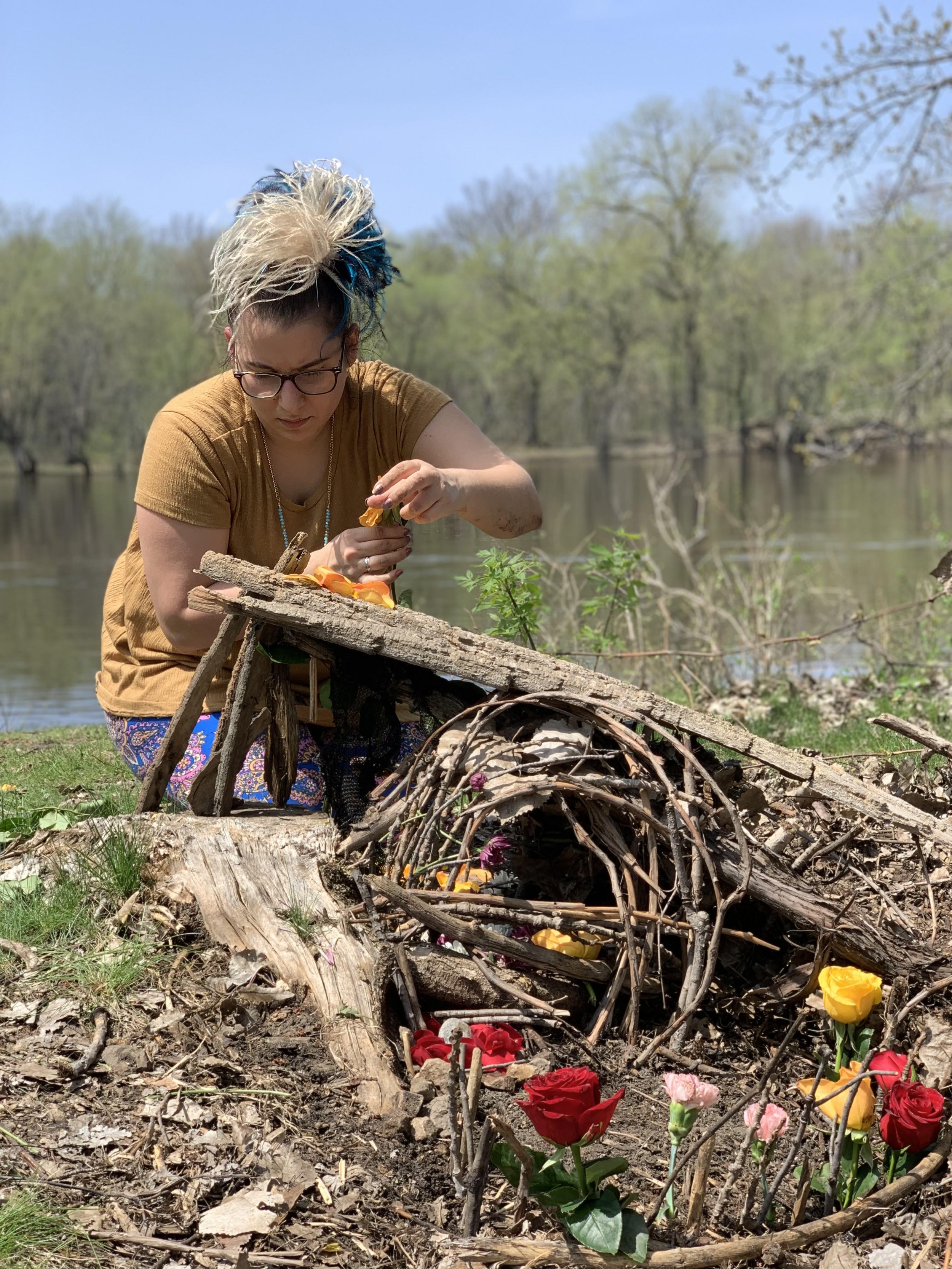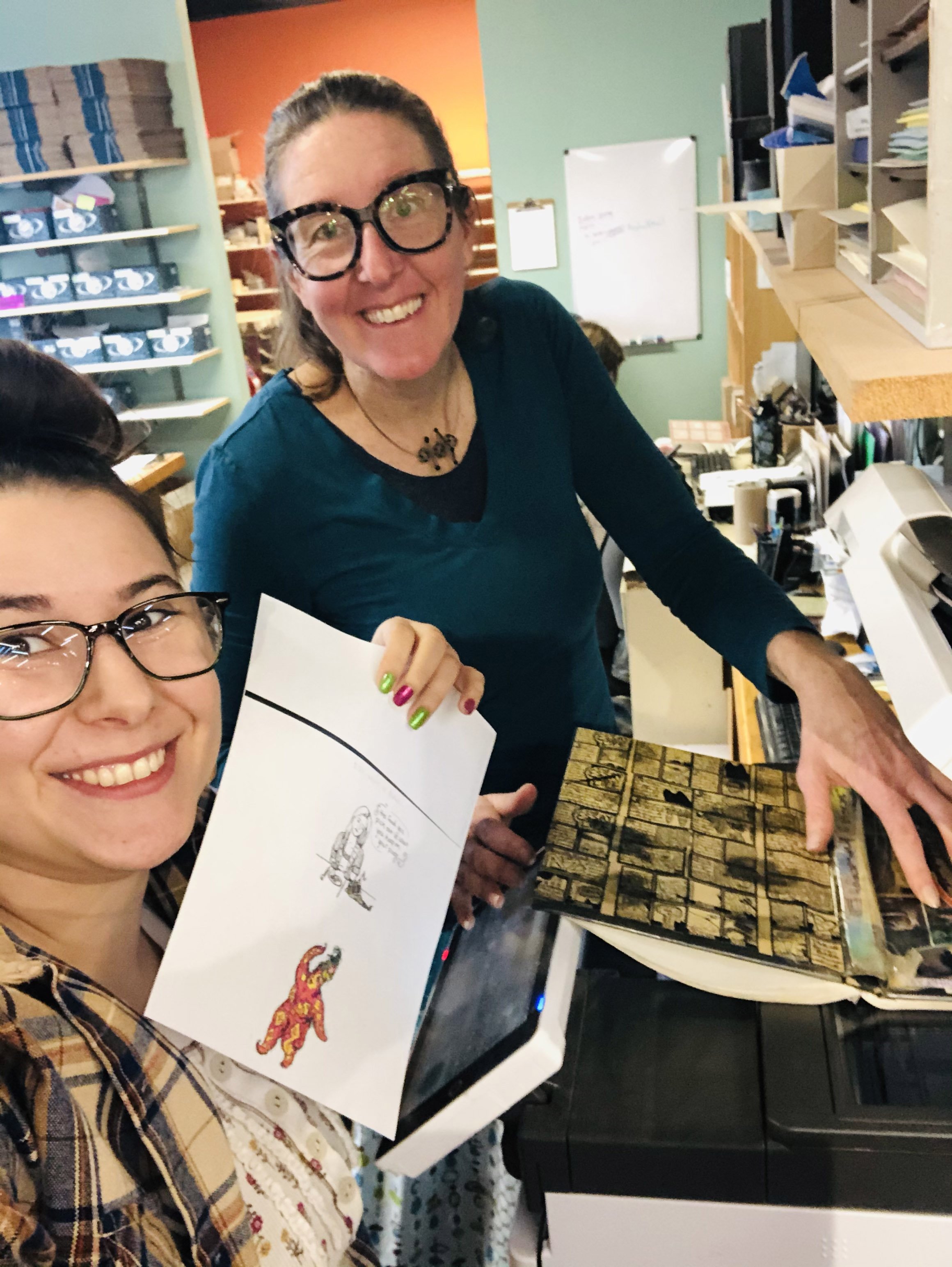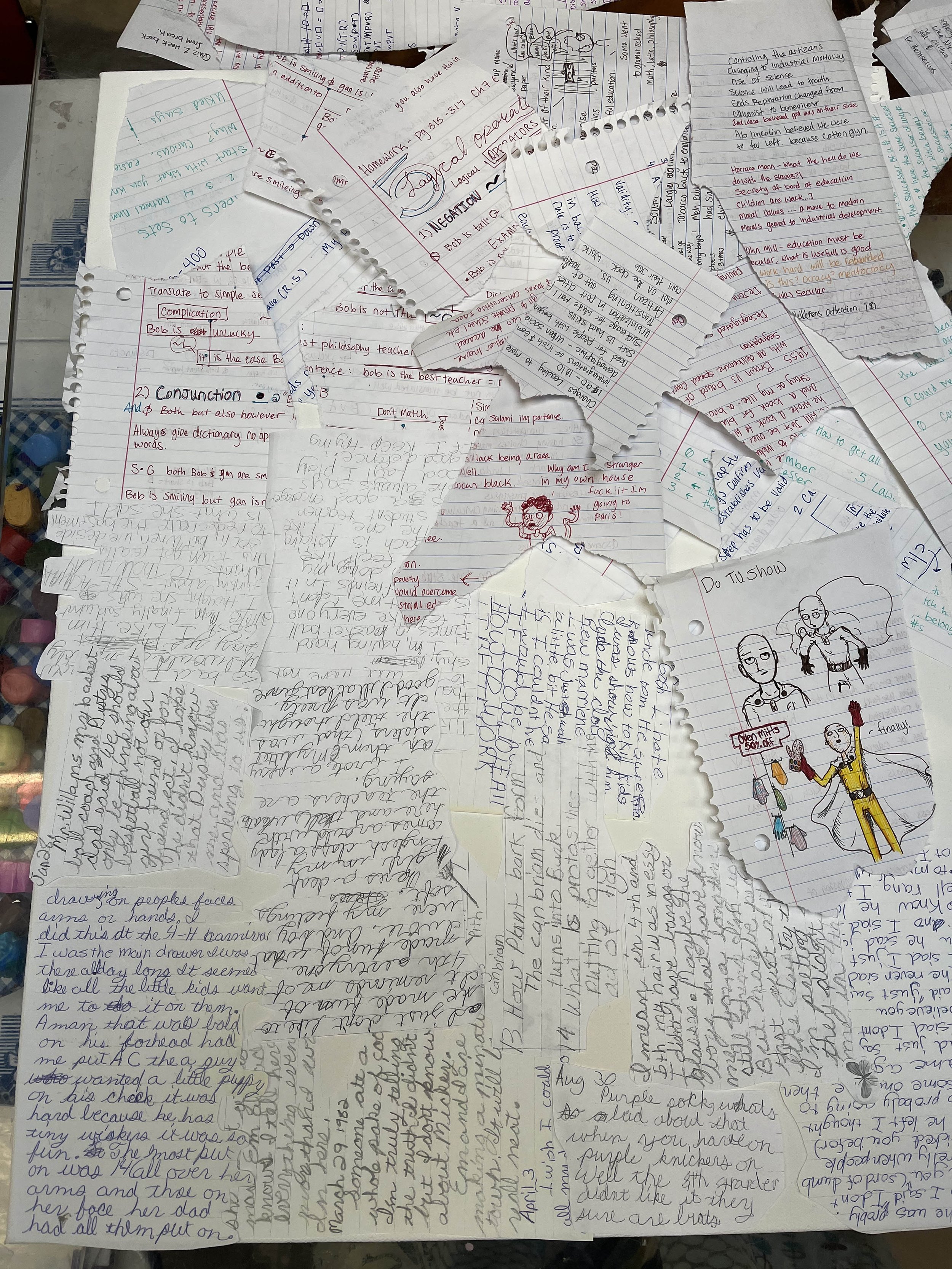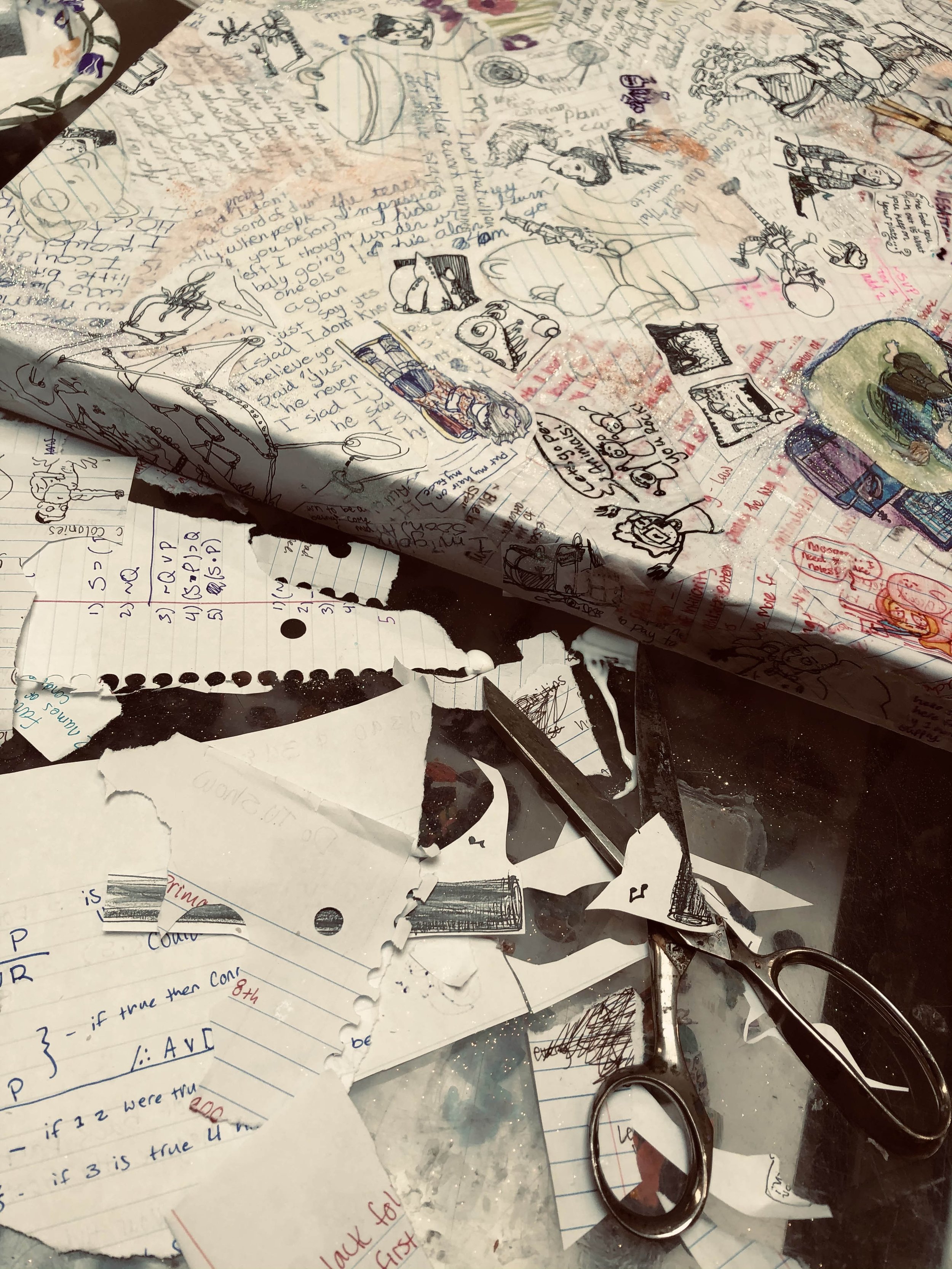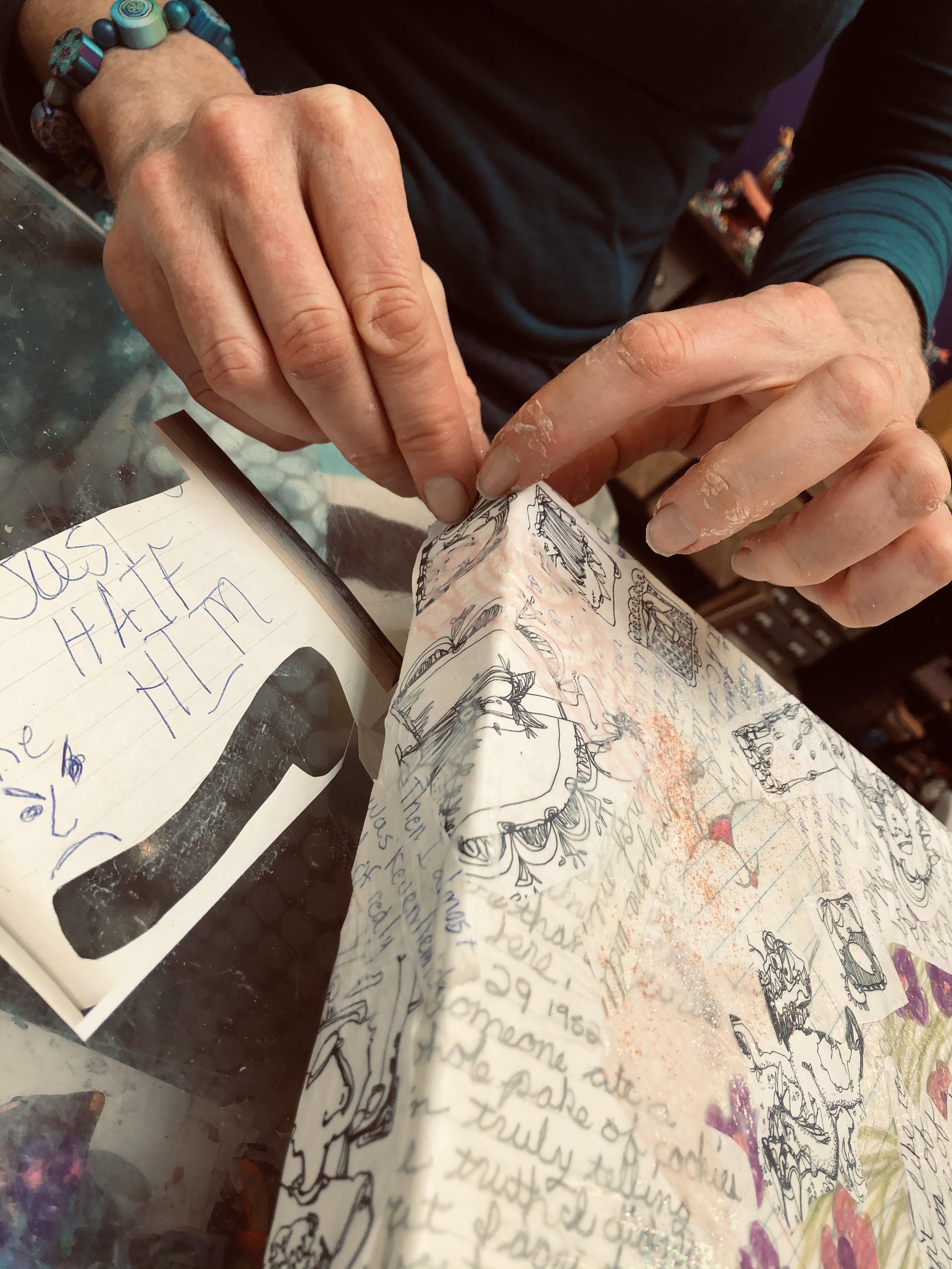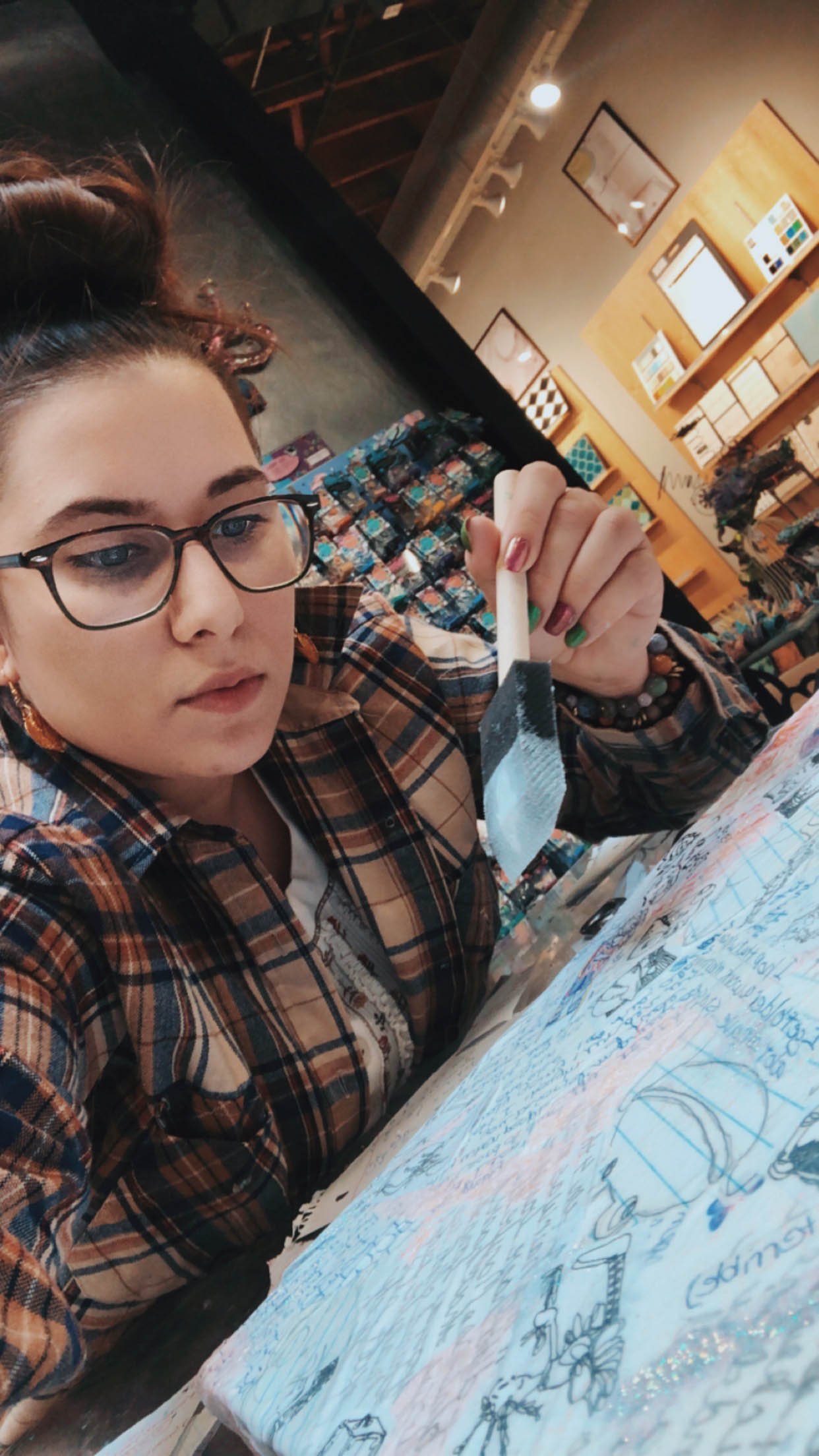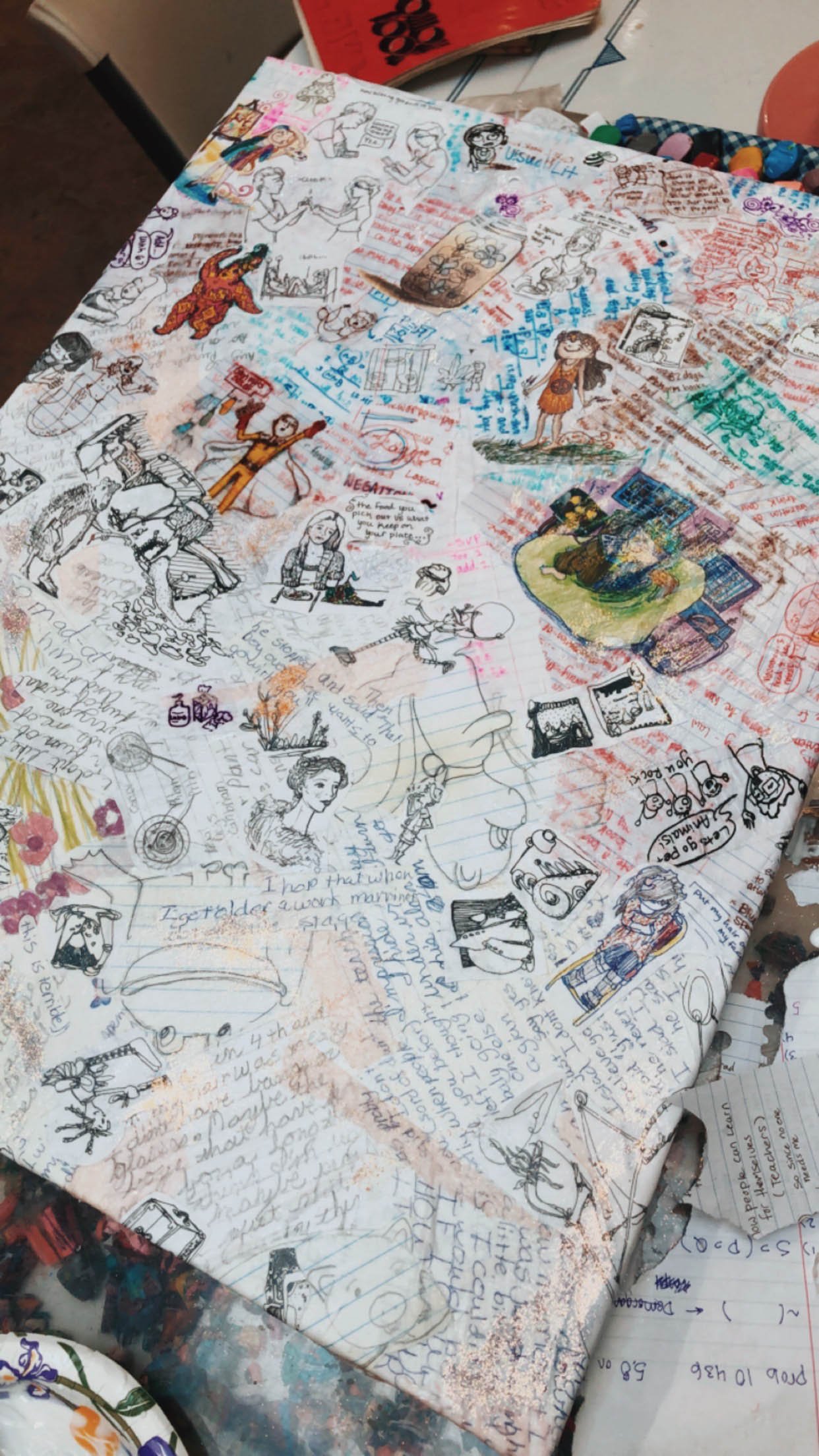Layl worked with young artist Madalina Kelner to create a series of pieces that explore their childhood. They will be part of an exhibit at Homewood Studios put on by Art to Change the World called Age of Age. The ten teams of artists are all over twenty years apart in age and span from age 25 to 104! Aging, ageism and other ways of looking at our lives through this lense will be part of this exhibit.
Here is the artist statement about Layl and Madalina’s project:
Have you ever realized that what you do when you were a kid is somehow similar to
what you do now as an adult? We explored our childhood and how the art we did
formed our futures and got us through our childhood.
It was interesting to explore the differences and similarities of our childhoods. Layl’s
childhood was about forty years ago and Madalina’s was about fourteen years ago but
we both made art that was similar in many ways. For example, Layl created a “Smurf
Village” on her brother’s train track and Madalina made fairy houses in the woods. We
thought it would be fun to revisit these creations. As we created, we talked a lot about
what our childhoods were like.
Layl working on the fairy house. Photo by Madalina Kelner
Layl used art to try to get more attention from her mom who was taking care of three
other children and helping her dad run a business. She also had her little sisters to keep her
creating even into her early teens. Madalina was adopted and was seen as a “wild
card” and was allowed to lead her own life as her parents followed her interests and.
From a young age she displayed a heavy passion for the arts.
Madalina working on the fairy house.
Madalina dealt with a lot of bullying all through elementary and middle school, so she
used art to escape and focus. “For me I just followed the dopamine spikes I got from
art,” says Madalina. Both of us used doodling as a way of focusing and learning in
school. Madalina would draw out her notes in the form of cartoons and she still has all
her notebooks, many of which we used in our piece “Visual Lit- This is Terrible”. Layl
would draw doodles that would impress the other kids even though looking back now
they really weren’t that amazing. She also kept a journal since age 12 which we
photocopied and added into “Visual Lit- This is Terrible”. When you look at both of our
early skills, Layl’s storytelling in journaling and Madalina’s illustrations of school subjects
you can really see the beginnings of the art and design we both do today.
When asked how your perception of your childhood change with this looked back
together Madalina felt more validated about her perception of being bullied and the
struggle she went through. Layl realizes now that she was not bullied as much as she
had thought and that her life of moving from school to school gave her many chances to
escape bullies and her own shyness was also her protection. Layl says, “I’m not sure if
it’s my distance from my childhood that gives me the rose-colored view, looking back, or
if it was really not that bad… or I’m more healed with a longer amount of time.”
Regardless, for both individuals’ art was a means of healing.
Although one childhood took place in the 90s and the other in the 70s, we were
amazed how closely aligned our creative approach to art was.
It’s possible for negativity to dissipate over time and this project demonstrates two
significant stages of individuals healing through the arts.
View through the Fairy House to the river. Photo by Madalina
Epilog: Layl went back a few days later and the fairy house was flooded but still standing! A week later it was completely back to the elements. You may wonder where all the flower came from- someone had left a bouquet on the river bank which we used to decorate- what serendipity for our creativity!

